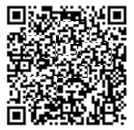[1] SUKON P, NAM NH, KITTIPREEYA P, et al.Global prevalence of chlamydial infections in birds: a systematic review and meta-analysis[J]. Prev Vet Med, 2021, 192: 105370.
[2] WANG J, WANG B, XIAO J.Chlamydia psittaci: a zoonotic pathogen causing avian chlamydiosis and psittacosis[J]. Virulence, 2024, 15(1): 2428411.
[3] MARTI H, SUCHLAND RJ, ROCKEY DD.The impact of lateral gene transfer in Chlamydia[J]. Front Cell Infect Microbiol, 2022, 12: 861899.
[4] BENAMRI I, AZZOUZI M, SANAK K.An overview of genes and mutations associated with Chlamydiae species' resistance to antibiotics[J]. Ann Clin Microbiol Antimicrob, 2021, 20(1): 59.
[5] BINET R, MAURELLI AT, et al.Frequency of development and associated physiological cost of azithromycin resistance in Chlamydia psittaci 6BC and C. trachomatis L2[J]. Antimicrob Agents Chemother, 2007, 51(12): 4267-4275.
[6] MIYASHITA N.Atypical pneumonia: pathophysiology, diagnosis, and treatment[J]. Respir Investig, 2022, 60(1): 56-67.
[7] HEDDEMA ER, VAN HANNEN EJ, DUIM B.An outbreak of psittacosis due to Chlamydia psittaci genotype A in a veterinary teaching hospital[J]. J Med Microbiol, 2006, 55(Pt 11): 1571-1575.
[8] MANDELL LA, WUNDERINK RG, ANZUETO A.Infectious diseases society of America/American thoracic society consensus guidelines on the management of community-acquired pneumonia in adults[J]. Clin Infect Dis, 2007, 44(Suppl 2): S27-S72.
[9] WORLD HEALTH ORGANIZATION. Psittacosis-multiple countries[EB/OL].(2024-03-05)[2024-03-20]. https://www.who.int/zh/emergencies/disease-outbreak-news/item/2024-DON509.
[10] TUFIC-GARUTTI SDS, LONGO LGA, RAGUPATHY R, et al.Whole genome sequencing and phylogenetic analysis to examine acquisition of Escherichia coli clones during international travel[J]. Diagn Microbiol Infect Dis, 2025, 111(3): 116701.
[11] ZHOU Y, ZOU Y, ZHOU L, et al.Acute respiratory distress syndrome caused by Chlamydia psittaci: a case report and literature review[J]. Front Med, 2024, 11: 1418241.
[12] KOZUKI E, ARIMA Y, MATSUI T, et al.Human psittacosis in Japan: notification trends and differences in infection source and age distribution by gender, 2007 to 2016[J]. Ann Epidemiol, 2020, 44: 60-63.
[13] LI Z, LIU P, HOU J, et al.Detection of Chlamydia psittaci and Chlamydia ibidis in the endangered crested ibis (Nipponia nippon)[J]. Epidemiol Infect, 2020, 148: e1.
[14] FAVARONI A, TRINKS A, WEBER M, et al.Pmp repertoires influence the different infectious potential of avian and mammalian Chlamydia psittaci strains[J]. Front Microbiol, 2021, 12: 656209.
[15] POLKINGHORNE A, GREUB G.A new equine and zoonotic threat emerges from an old avian pathogen, Chlamydia psittaci[J]. Clin Microbiol Infect, 2017, 23(10): 693-694.
[16] HARKINEZHAD T, VERMINNEN K, DE BUYZERE M, et al.Prevalence of Chlamydia psittaci infections in a human population in contact with domestic and companion birds[J]. J Med Microbiol, 2009, 58(Pt 9): 1207-1212.
[17] BRANLEY J, BACHMANN NL, JELOCNIK M, et al.Australian human and parrot Chlamydia psittaci strains cluster within the highly virulent 6BC clade of this important zoonotic pathogen[J]. Sci Rep, 2016, 6: 30019.
[18] DEMBEK ZF, MOTHERSHEAD JL, OWENS AN, et al.Psittacosis: an underappreciated and often undiagnosed disease[J]. Pathogens (Basel, Switzerland), 2023, 12(9): 1165.
[19] KNITTLER MR, BERNDT A, BÖCKER S, et al. Chlamydia psittaci: new insights into genomic diversity, clinical pathology, host-pathogen interaction and anti-bacterial immunity[J]. Int J Med Microbiol, 2014, 304(7): 877-893.
[20] FERRERI AJ, DOLCETTI R, MAGNINO S, et al.Chlamydial infection: the link with ocular adnexal lymphomas[J]. Nat Rev Clin Oncol, 2009, 6(11): 658-673.
[21] SACHSE K, LAROUCAU K, VORIMORE F, et al.DNA microarray-based genotyping of Chlamydia psittaci strains from culture and clinical samples[J]. Vet Microbiol, 2009, 135(1-2): 22-30.
[22] 陆慧群,石晓路,冀理银,等. 鹦鹉热衣原体的生物学特征分析[J/CD]. 新发传染病电子杂志, 2022, 7(3): 72-77. |



